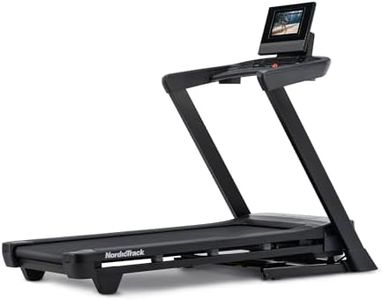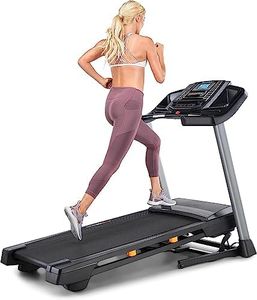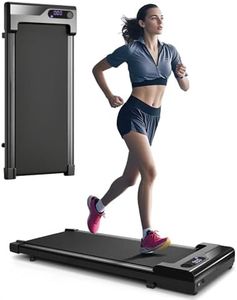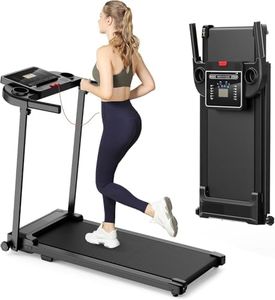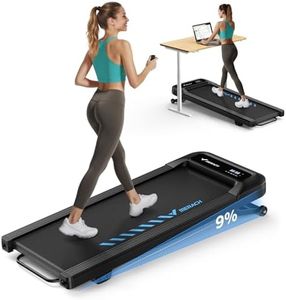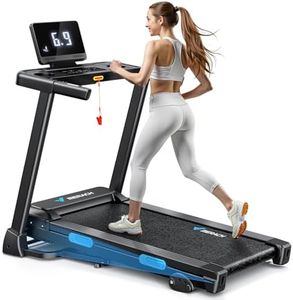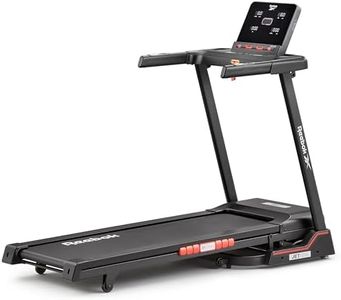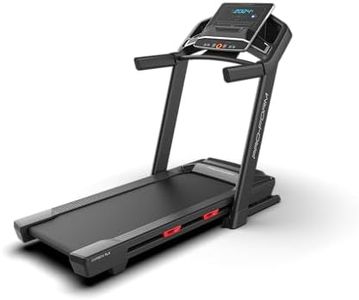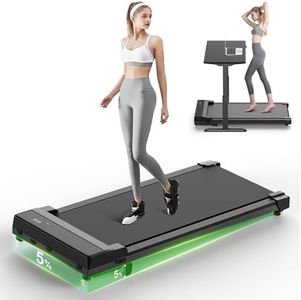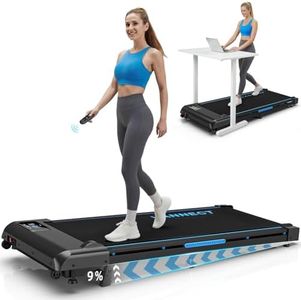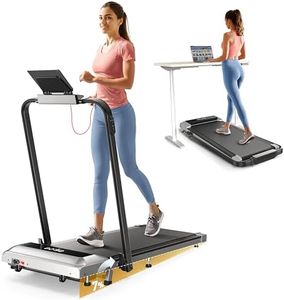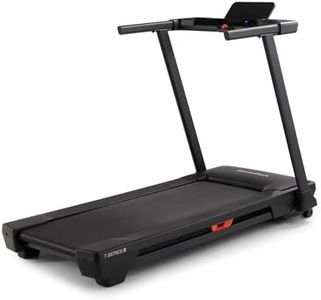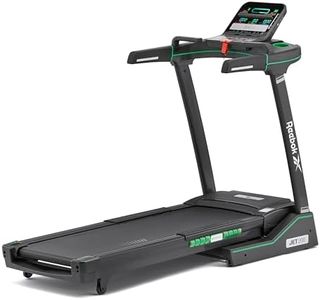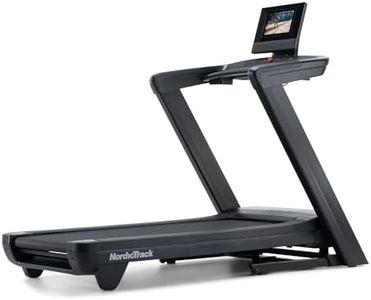We Use CookiesWe use cookies to enhance the security, performance,
functionality and for analytical and promotional activities. By continuing to browse this site you
are agreeing to our privacy policy
10 Best Fold Up Treadmills
From leading brands and best sellers available on the web.Buying Guide for the Best Fold Up Treadmills
When choosing a fold-up treadmill, it's important to consider your fitness goals, available space, and personal preferences. Fold-up treadmills are a great option for those who need to save space but still want the convenience of a home workout. They can be easily stored away when not in use, making them ideal for small apartments or homes. To find the best fit for you, focus on the key specifications that will impact your workout experience and the treadmill's usability.Motor PowerThe motor power of a treadmill is measured in horsepower (HP) and determines how smoothly and efficiently the treadmill operates. A more powerful motor can handle higher speeds and heavier usage, which is important if you plan to run frequently or if multiple people will use the treadmill. Motors typically range from 1.5 HP to 4.0 HP. For walking, a motor with 1.5 to 2.5 HP is usually sufficient. For jogging or running, look for a motor with at least 2.5 to 3.0 HP. Consider your workout intensity and frequency to choose the right motor power for your needs.
Running SurfaceThe running surface, or belt size, is crucial for comfort and safety during your workout. A longer and wider belt provides more room to move, which is especially important for taller users or those with a longer stride. Standard belt sizes range from 16 to 22 inches in width and 45 to 60 inches in length. If you plan to walk, a smaller belt may suffice, but for running, opt for a larger belt to ensure you have enough space to move comfortably. Consider your height and stride length when selecting the running surface.
Folding MechanismThe folding mechanism is what allows the treadmill to be stored away easily. There are generally two types: manual and hydraulic. Manual folding requires you to lift and lock the deck into place, which can be cumbersome for some users. Hydraulic folding systems use a hydraulic lift to assist in raising and lowering the deck, making it easier and safer to fold. If ease of use is a priority, especially if you plan to fold and unfold the treadmill frequently, a hydraulic system may be more suitable.
Weight CapacityThe weight capacity of a treadmill indicates the maximum user weight it can safely support. This is important for ensuring the treadmill's durability and performance. Most fold-up treadmills have a weight capacity ranging from 220 to 350 pounds. It's advisable to choose a treadmill with a weight capacity that exceeds your body weight by at least 50 pounds to ensure stability and longevity. Consider who will be using the treadmill and choose a model that accommodates the heaviest user.
Incline OptionsIncline options allow you to simulate uphill walking or running, which can enhance your workout by increasing intensity and engaging different muscle groups. Treadmills offer either manual or automatic incline adjustments. Manual incline requires you to adjust the incline level by hand, while automatic incline can be adjusted with the push of a button during your workout. If you enjoy varied workouts or want to increase the challenge, look for a treadmill with a range of incline levels and automatic adjustment for convenience.
Console FeaturesThe console features of a treadmill include the display and any additional functionalities like workout programs, heart rate monitoring, and connectivity options. A clear, easy-to-read display is important for tracking your workout metrics such as speed, distance, time, and calories burned. Some treadmills offer pre-set workout programs to add variety to your routine, while others may include Bluetooth connectivity or app integration for a more interactive experience. Consider what features are important to you and how they align with your fitness goals.


